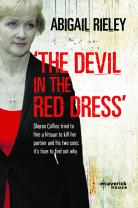I was watching The Last Seduction with the Husband last night. It’s one of my favourite films. Afterwards we were jokingly wondering if this might have been the film that gave Sharon Collins the idea for her ill-judged bit of online retail. It’s doubtful. The similarities between fact and fiction are slim, to say the least, but it’s a joke we always make. After all, if Sharon had simply been one of my characters then she probably would have been influenced by one of my favourite films, I could have made her influenced by anything I wanted.
It might seem like an obvious distinction between fiction and non-fiction but it’s one that it’s all too easy to blur in the writing. Writing a book is completely different from writing a piece for a newspaper or a post for this blog about the trial while it’s going on. It’s an opportunity to stand back and look at how the story flows, to find the rhythm at it’s heart. It doesn’t feel any different telling a true story or making one up once I get down to writing. The research and planning stages might be different but once the story starts to pick up speed it’s always a question of following the narrative flow. It’s the same with characters. Whether I’m replaying in memory words and actions I know happened, that have been proved in front of a court of law, or allowing the characters to block out their own movements in the theatre of my imagination, it all comes out much the same.
I’ve remarked here before about how strange it feels seeing “characters” in the flesh when a case comes back to court. Something happens when you’ve spent weeks in front of the screen with a subject. In a way it becomes part of you, as do the dramatis personae. You can get rather possessive. With recent cases the problem’s academic. They’re live stories that will continue to develop outside the scope of my book. But today I’m more concerned with the flow of the story itself.
Why does it seem amusing that Sharon Collins might have been influenced by The Last Seduction? Because it works with the story. It underlines her mixed attempts to be a real life femme fatale by contrasting with a great fictional example. When I was writing Devil in the Red Dress I used to listen to the Last Seduction soundtrack (a great noirish jazz affair) and my movie viewing tended to revolve around Bogart and Bacall or the Coen Brothers. While I couldn’t do anything with the facts of the case or the words of the witnesses, the underlying beat to that one was most definitely Hollywood Noir with a rather comic edge.
I’m not one of those writers who has to work in silence. I’ve been a journalist for too long for surrounding babble to worry me that much but given the choice I’d rather have my choice of music than Sky News and radio bulletins. So far each book has had it’s own mp3 playlist on my laptop. Devil was smoky jazz, Death on the Hill was written to an accompaniment of mainly French pop and this new one appears to be insisting on passionate instrumentals of Irish or Russian origin. When I was working on my novel I had a different playlist for each character – it helped to keep them solid while I was still working them out. Whatever it’s content though the playlists all serve the same purpose. They’re a shortcut to the narrative flow. A way of getting to where I need to go.
At the moment, because I’m at an early stage of writing, I’m still feeling for that rhythm but I know it’s there. I think that narrative flows through life like an underground stream. We all instinctively know what works and what doesn’t, based on the facts before us and our knowledge of our fellow man. It’s that same knowledge that can lead a jury to a verdict or make a novel feel like it isn’t working. It’s that gut feeling that creates archetypes and truisms. There’s a rhythm that undercuts everything and any story has to fall into step or at least be damn good at syncopation. I’m not talking about the simple stuff that we’d always like to be true – boy gets girl, good always triumphs and evil gets it’s just deserts. It’s just real life. They’re basic rules that always affect the story no matter what you write – true crime or crime fiction, chick lit or fantasy.
At the moment I’m working on something where hearing that rhythm feels more important than ever. I don’t have the benefit of observing my characters and I can’t make them up. If I get them wrong I’m doing a disservice to a story that has, after all, already unfolded. It’s rather different from anything I’ve ever done. But I think I’ve found the melody at last, enough for me to follow until the narrative flow catches me and the story takes hold.


Leave a Reply